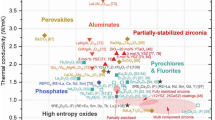Abstract
This work deals with problems that arise when modern surface-mounted electronics are to be reconditioned after smoke contamination. In a fire, hydrogen chloride, which is formed when polyvinylchloride is present, is deposited on various materials. Electronic equipment is especially sensitive since malfunction may occur after a longer or shorter time of operation due to the chloride contamination.
Earlier work has shown that through-hole electronics can be reconditioned, with good results, after deposition of up to 100 µg chloride/cm2 in the surrounding area. The lower limit when cleaning is needed is often specified to 10 µg chloride/cm2.
In this work, therefore, surface-mounted electronics have been exposed to smoke containing hydrogen chloride, which has contaminated the test boards with 45 to 75 µg chloride/cm2. Three different methods for cleaning smoke-contaminated electronics were investigated: manual, automatic spray, and ultrasonic. Each method was able to clean to a contamination level lower than 1.5 µg sodium chloride equivalents/cm2. The automatic spray method could not remove all contaminants beneath the components. All three methods were capable of improving the surface insulation resistance to a satisfactory level.
Conformal coating can, to a large extent, protect the electronics against corrosive smoke. However, decontamination of boards conformally coated with acrylic coatings may be complicated since smoke products are partly absorbed into the conformal coating. The large difference between chloride contamination in a fire and during the manufacture of electronic equipment is the nature of deposition. Experiments have shown that the hydrogen chloride reacts with lead in the solder to form lead chloride. During manufacture, chloride salts are deposited all over the test board.
Migration between conductors of different potential has not occurred. This is due to the fact that chloride is localized on the conductors as lead chloride. Galvanic corrosion, on the other hand, has occurred between metals within one conductor.
Similar content being viewed by others
References
Olesen, S. T., “Effects of Corrosive Smoke on Electronics,” ElektronikCentralen Denmark, Report ECR-145, 1984.
Reagor, B. T., “Smoke Corrosivity: Generation, Impact, Detection, and Protection,”Journal of Fire Sciences, Vol. 10, No. 2 (1992), pp. 169–179.
Granath, G., “Rengöring av elektronik vid tillverkning och sanering,” (“Cleaning of Electronics During Production and Reconditioning”), IVF-rapport GE9001, 1990.
Tegehall, P-E., “The Impact of Crevices Beneath Surface-Mounted Devices on the Cleaning Efficiency,”Soldering & Surface Mount Tech., No. 8 (1991), pp. 46–52.
Brox, B., “Värdering av ny tillgänglig teknik: praktiska försök med testkort,” (“Evaluation of New Available Technology: Experimental Work with Test Boards”),Technique for Clean Electronics (TRE), Report B3, IVF Göteborg, Sweden, 1990.
Andersson, L-H., and Jungel, M., “Värdering av nagra metoder för bestämning av ytklorider pa brandplaster,” (“Evaluation of Some Methods for the Determination of Surface Chlorides at Fire Sites”), FOA Sweden, Report C 20733-2.4, Sept. 1988.
Bergendahl, C. G., and Dunn, B. D., “Evaluation of Test Equipments for the Detection of Contamination on Electronic Circuits,” ESA STM-234, 1984.
Dunn, B. D., and Bergendahl, C. G., “An Evaluation of the Solvent Extraction Method for the Detection of Ionic Contamination on Substrates Supporting Large Surface-Mounted Devices,”Brazing & Soldering, No. 13 (Autumn 1987), pp. 20–32.
Carlsson, P., and Cider, L., “The Relation Between the Halide and Alkali Concentrations and the Electrochemical Migration on Printed Circuit Boards,” presented at the Electrochemical Society Conference on Corrosion and Reliability of Electronics Materials and Devices, Toronto, Canada, October 1992.
Author information
Authors and Affiliations
Rights and permissions
About this article
Cite this article
Cider, L. Cleaning and reliability of smoke-contaminated electronics. Fire Technol 29, 226–245 (1993). https://doi.org/10.1007/BF01152108
Issue Date:
DOI: https://doi.org/10.1007/BF01152108




